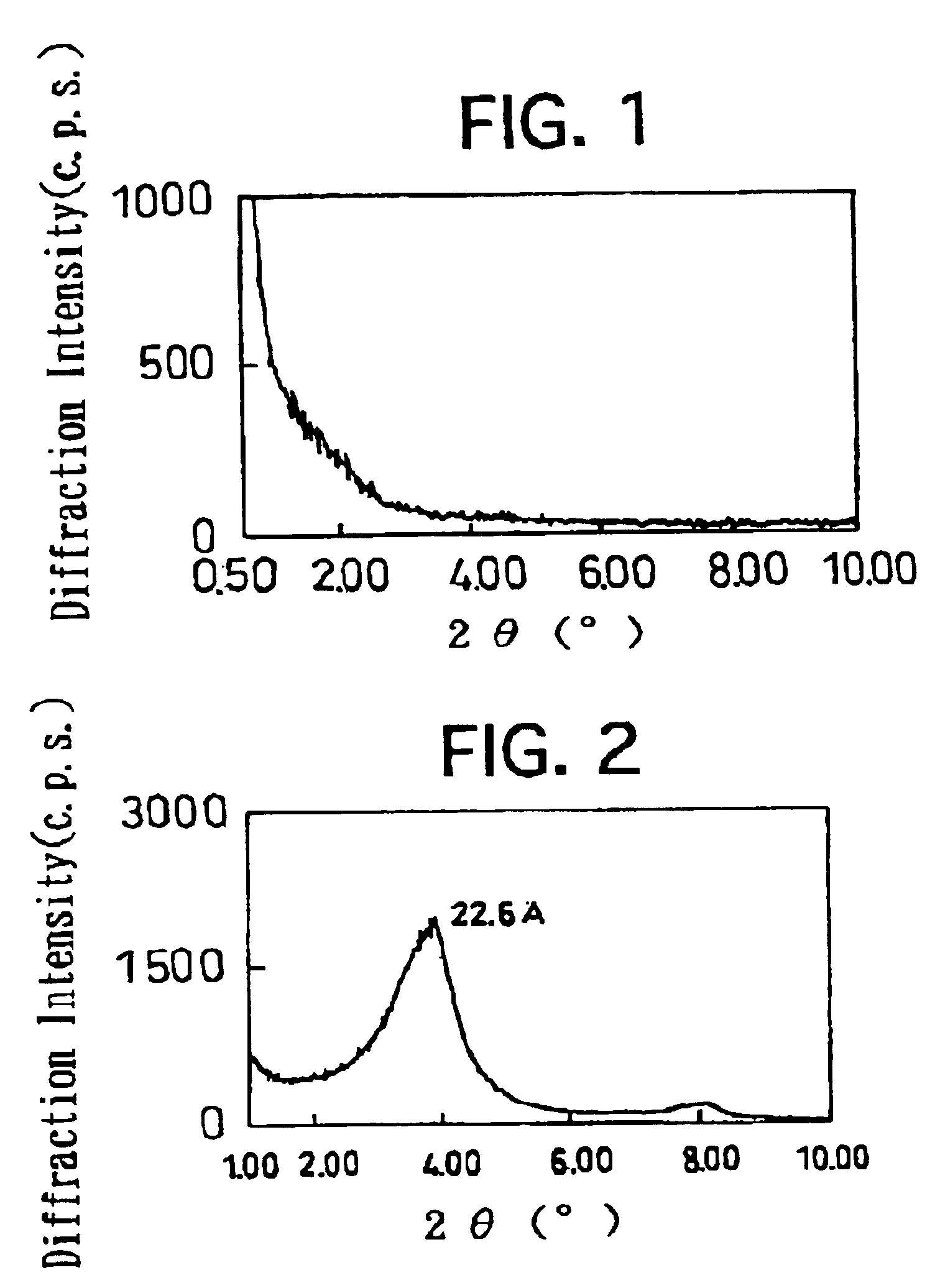Phenolic resin composite material
a technology of phenolic resin and composite materials, which is applied in the direction of mica, inorganic insulators, transportation and packaging, etc., can solve the problems of insufficient improvement of reinforcement effect and heat resistance, weak bonding of organic materials with phenolic resins, and embrittlement of materials, so as to improve the heat resistance of phenolic resin composite materials and mechanical strength. good, good heat resistance
- Summary
- Abstract
- Description
- Claims
- Application Information
AI Technical Summary
Benefits of technology
Problems solved by technology
Method used
Image
Examples
examples
[0042]Hereinafter, the present invention will be described in much more detail while referring to specific examples.
(1) Manufacturing Samples and Test Pieces
① Manufacturing Organized Clay (Organized Layered Clay Mineral)
[0043]A sodio-montmorillonite was used as the layered clay mineral, and octadecyl ammonium was used as the organic onium salt, respectively. Note that the sodio-montmorillonite was produced by KUNIMINE KOGYO Co., Ltd. They were stirred and mixed in water so that the sodio-montmorillonite (i.e., the layered clay mineral) was ion-exchanged with the octadecyl ammonium ion (i.e., the organic onium ion) so that a cation exchange capacity was 110 milli-equivalent / 100 g. Thus, an organized clay was manufactured.
② Preparation of Formed Materials
[0044]A resol type phenolic resin with an additive agent added was used, and was compounded with a variety of fillers, set forth in Table 1 below, as well as the above-described organized clay in contents, set forth in Table 1, and wa...
PUM
| Property | Measurement | Unit |
|---|---|---|
| Percent by mass | aaaaa | aaaaa |
| Percent by mass | aaaaa | aaaaa |
| Percent by mass | aaaaa | aaaaa |
Abstract
Description
Claims
Application Information
 Login to View More
Login to View More - R&D
- Intellectual Property
- Life Sciences
- Materials
- Tech Scout
- Unparalleled Data Quality
- Higher Quality Content
- 60% Fewer Hallucinations
Browse by: Latest US Patents, China's latest patents, Technical Efficacy Thesaurus, Application Domain, Technology Topic, Popular Technical Reports.
© 2025 PatSnap. All rights reserved.Legal|Privacy policy|Modern Slavery Act Transparency Statement|Sitemap|About US| Contact US: help@patsnap.com


